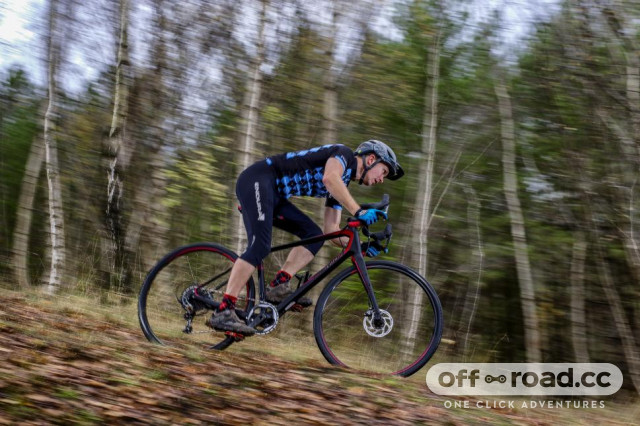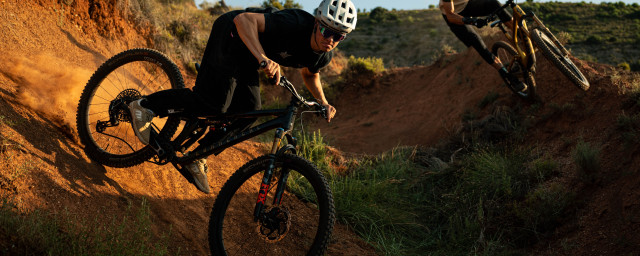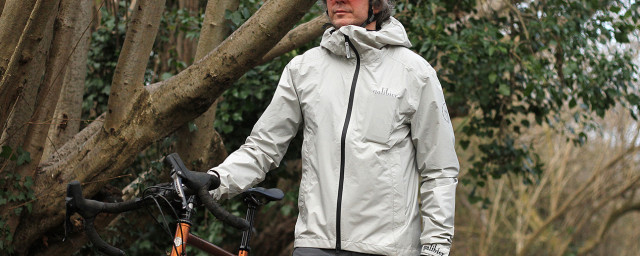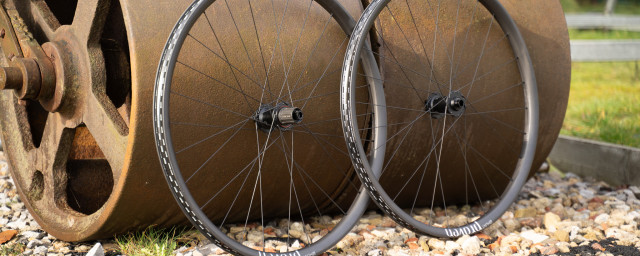Beginners guide on how to plan new gravel routes

Finding the best fire roads, trails and farm tracks is what all gravel riders want. But unless you have unlimited time in your hands to go and try out every possible path around your area, planning gravel routes can be more difficult than planning a road ride.
- The best gravel bikes and adventure bikes you can buy for around £1,000
- 10 of the best money-no-object gravel and adventure bikes we've tested
- 18 Gravel events to attempt in 2022
Part of the difficulty linked to planning a gravel route lies in the definition of “gravel”. In the UK, where it has become a highly contested topic, it generally means riding a surface that is not tarmac. Whether it’s mud, actual gravel, bin lanes, or as it often is, a bog, is rather irrelevant. They can all be fun and add spice to your ride.
Route planning for gravel rides is a skill that is well worth mastering. Despite the concept of gravel being so vast, what you want to avoid is endless sections of hike-a-bike or miles after miles of tarmac connected by short stretches of off-road stuff. It needs to be a good ratio - we are not all located next to national parks so some of us have to travel long distances before we can hit that smooth gravel, whereas others have singletrack starting from their back garden. And this brings us to a good starting point.
Assess what you can do
The first step in planning any ride is to determine what you want and what your equipment and fitness are like. There is a thing called "underbiking", which in essence means you're riding a blue trail on your 25mm road tyres - sometimes this is a mistake in route planning, sometimes a conscious choice. There's nothing wrong with underbiking, but we'd still recommend having a bike and tyres suitable for the job - and being realistic about your own fitness and skills.
Check what your tyres and bike can do
Assessing what your bike and tyres are capable of is a kye If you’re running some knobbly, slow-rolling tyres, you will want to avoid tarmac and consider travelling to the start of the route by another mode of transport (public transport, or car).
If your bike is a little bit more of an all-rounder, and you’re comfortable with longer distances, you could easily ride some tarmac to the start of your off-road route - or mix surfaces a lot during the ride.
Match the terrain with your skills and preferences
When riding gravel you're almost bound to encounter some hills. If your spirit animal is a mountain goat, you might like to explore the lumpiest routes - but remember that climbing on gravel is a lot harder than on-road - you might lose traction depending on the surface and the gradients can be steeper than on roads that are designed for cars. And, you will also have to come down those hills at some point. So if you are still getting used to descending on gravel, account more time for possibly walking down the hills.
Reserve enough time for completing the route
And after you've assessed all of the above, you might realise that the loop you've planned is going to be mostly hiking with your bike - and that's ok! Time is just something you need to consider when planning your off-road route. Especially if you’re coming from cycling predominantly on road, the time a certain distance off-road takes might surprise you.
When you could previously ride a 20-mile loop in an hour, the same distance might take you sometimes double the time off-road - depending on the surface types (and how many wrong turns you take…).
Get some basic equipment for navigating off-road
[Photo by Lorne Campbell]
When going off-road, the usual road signs don’t exist to help you if you get lost, which means that having a phone or preferably, a GPS device, is essential. For multiday routes, a paper map could be an option as well, but as a basic rule, don’t expect to have any mobile signal. Make sure you have at least one offline map and you are comfortable with using whatever navigating device or map you’ve got with you.
Take a battery bank with you for longer rides if your devices don’t have a great battery life - and in case things go wrong and you end up spending a lot more time out than planned.
And lastly, this is not the equipment but make sure to let someone know of your ride plan. Some GPS devices allow you to share your live location with a friend or family member, which is great if you don’t want to worry about updating them on your progress.
- [best cycling computers for off-road]
Map your route
The more time you spend on your route planning and preparation, the better your ride usually is. Cross-referencing different sources and maps is an excellent way to make sure that what you’ve routed is actually alright to ride. Make a route on an app, then check if you can spot the trails on satellite maps or Street View and if there's anything you're unsure of, ask a local.
Use route planning and recording apps
You might have heard of the likes of Komoot, Strava and Ride with GPS. Once you learn to use them, these apps offer heaps of routes and allow you to choose the surface type, distance, elevation, and even different layers of maps!
When planning a route, it’s good to not only check the surface type, but also the heatmaps. Using this map layer you can see if other riders have done the section you’re about to ride - and if it seems like many have, it probably is very rideable, or at least hikeable.
If you don’t use major cycling apps, such as Komoot, finding your next adventure on gravel might seem like a daunting task - but it's really not. There are many other ways to plot a route, and those are to follow.
Check cycling-specific websites - and do a simple web search
It's probably the most obvious thing to do when starting without a route planning app; type in "best gravel routes in [your area]". This will almost certainly result in a number of hits, which you can scroll through to determine if there's anything to your taste.
Cycling UK and Sustrans are national bodies that have a number of route recommendations on their websites and many of them include a video. Both sites also have a basic journey planner, which, mind you, is best for urban routes.
Visit local council websites
Many local councils have given cycling and active travel more priority in recent years and started to add recommendations on routes and places to visit on their websites. Check out for example this Bristol page and further up north, Falkirk. Council websites can be rather information filled so searching for the cycling page on a search engine is often easier.
The council websites are great if you’re looking for something easily accessible as most of the routes stay within the council area. Many are also accompanied by videos, which will give you a great insight into what to expect.
Ask friends, join groups and check events
By riding with other people you’re almost certainly going to find some new paths, and chatting to folk on your rides is a great way to hear about the best trails and paths and their condition.
Your local bike shop might have a gravel ride that you can join, or there might be a collective or a club that does rides in your area. Also worth mentioning here that virtual (Facebook) groups are also good for sharing routes and asking questions.
Get some books
Books are old school, you might think. But don’t be too quick to judge. Books can offer you a good insight into the gravel riding in your area and inspired by the popularity of bikepacking, there are quite a few dedicated to gravel riding dropping out.
Flicking through a book not only saves your precious eyes from more screen time, but they often include a lot more practical information about the surroundings of the route than a route planner or app would. For example, where to eat, where to park, how to cut the route short and so on.
Most modern route books offer GPX-files to compliment the written route descriptions, making it easy for you to have the route on your cycling computer, as well-
Have fun exploring and getting lost
This is something that some hate, some love. Finding a new path and just following it might lead to a proper eureka moment when you connect two known parts of a route to one, even better one.
A big part of riding off-road is also about confidence and trust in yourself and your capability to get home even if you get lost, and a good way to train that is to get lost somewhere near familiar routes and areas.
Becoming good at planning routes is only achieved by practice and that's why taking a note of those unpassable bogs and closed roads is also important. This way, you know what to avoid next time.
















1 comments
Strava flybys can help too. I bumped into some gravel riders last year and I'm going to do the route they were on this weekend. They said it was fun - let's see what I think of it.